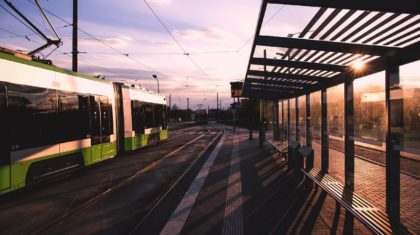
As inter-city active transportation options start to become the norm, more ambitious goals for regional connectivity are now being explored. These large and inspirational projects have exciting implications for the future of the US in terms of our transportation systems, health, environment, economy and culture. For instance, as part of the Los Angeles County Metropolitan Transportation Authority’s Active Transportation Strategic Plan (ATSP), the Alta team is spearheading the development of a Regional Active Transportation Network.
Here is the project in a nutshell:
Problem: Los Angeles County is the largest county in the United States (by population) and its 88 cities have planned a patchwork of pedestrian and bicycle networks with little consideration for regional travel.
Solution: The Active Transportation Strategic Plan will consolidate these networks and designate a regional spine network intended to serve longer trips. Taking cues from Sacramento, Portland, and the City of Los Angeles itself, the spine network will be comprised entirely of low-stress facilities, such as off-street paths, protected bike lanes, bike boulevards and sidewalks. This approach will set a threshold for active transportation facility quality and comfort in Los Angeles County, reinforcing a growing consensus that conventional “Class III” facilities — California-speak for sharrows and signage, often on an arterial or collector — are not suitable for the vast majority of potential users.

As part of the Active Transportation Strategic Plan, seven visioning workshops were held in August around Los Angeles County. We engaged stakeholders and members of the public around regional “desire lines,” asking big questions, such as “where do you want to get to and from?” and “what are the priority corridors for regional active travel?” The information gathered during these workshops will be used to prepare a Recommended Regional Active Transportation Network that will harness existing infrastructure and provide new opportunities for inter-jurisdictional mobility.
Alta has also been tasked with evaluating innovative (even experimental) design strategies to encourage active travel across the uniquely large, hot, and crowded county. These strategies may include:
- Dutch-style intersections (see recent opening of the Davis, CA, Dutch-style intersection)
- Elevated and sub-grade traffic circles
- Elevated, tunneled, and floating paths
- Incorporating shelter and solar power into off-street paths (e.g., the Coachella Valley CV Link)
- Taking advantage of existing natural and human-made rights-of-way (e.g., river wash, rail, freeway and BRT) to provide for continuous off-street travel

Metro ATSP and other local projects show that active transportation is playing a lead role in Los Angeles County’s dramatic urban evolution. Not content with being out-done by Chicago and New York, Los Angeles is marching toward a mobility renaissance that hinges on walking, bicycling and transit. Metro ATSP will help to accelerate the pace of change by developing a countywide vision and by channeling funding toward the build-out of the Regional AT Network.



